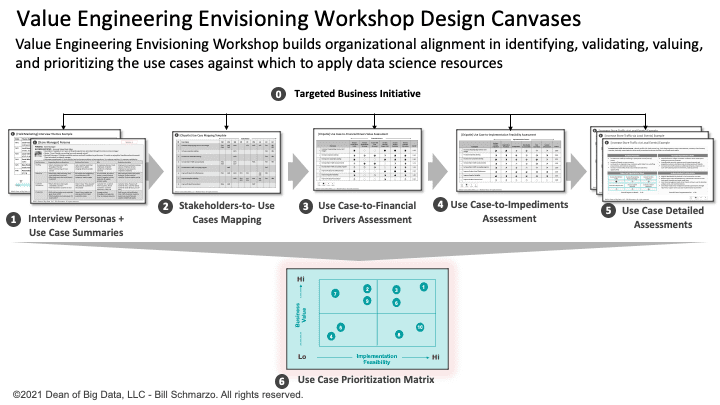
I have written two blogs arguing that Data Management is the most important Business Discipline for the modern organization. In the first blog, “Why Data Management is Today’s Most Important Business Discipline”, I outlined my logic, including:
- Artificial Intelligence (AI) is the most powerful business discipline of our generation, with AI’s ability to continuously learn and adapt to create new sources of customer, product, service, and operational value.
- The ability of AI to drive effective and responsible decisions is uber highly dependent upon high-quality, accurate, complete, unbiased data sets.
- Data management’s focus on manufacturing high-quality, accurate, complete, unbiased data sets is instrumental to economic growth in the 21st century.
- Thusly, Data Management is the most important Business Discipline of the 21st century.
In my second blog, “Data Management as a Business Discipline – Part 2: Theorems and Principles”, I formalized the definition of a Business Discipline.
A Business Discipline consists of systematic research, observation, measurement, and experimentation resulting in the assimilation of learnings into laws, theorems, concepts, principles, practices, frameworks, and formulas to enable the consistent application and ongoing enhancements from the real-world application of that discipline.
And as part of that blog, I also introduced key Data Management “Theorems and Principles” (as playing cards) that underpin the “Data Management as a Business Discipline” argument, including Economic Value Curve, Nanoeconomics, and Analytic Profiles.
In this third blog, I will review the real-world Data Management Implementation frameworks that support the “Data Management as a Business Discipline” argument.
DM Framework #1: Data & Analytics Business Model Maturity Index
The Data & Analytics Business Model Maturity Index (originally called Big Data Business Model Maturity Index) was the first data management framework I developed. I created this framework to help organizations benchmark and guide their journey at becoming more effective at leveraging data and analytics to power their business and operational models. It’s a measure of business model effectiveness, not technical competency, with data and analytics (Figure 1).

Figure 1: Data & Analytics Business Model Maturity Index
I also provided details or checked items on the data management, data science, business management, and cultural capabilities necessary to navigate the Data & Analytics Business Model Maturity Index (Figure 2).

Figure 2: Data & Analytics Business Model Maturity – Stages Maturation
Data Management Framework #2: Value Engineering Framework
Maybe my most powerful Data Management framework, the Value Engineering Framework, ensures that organizations are focusing their data and analytics capabilities on optimizing and accelerating the organization’s value creation capabilities (Figure 3).

Figure 3: Value Engineering Framework
I created and orchestrated a series of design canvases to support the business and data science collaborative Value Engineering ideation, validation, valuation, and prioritization processes (Figure 4).

Figure 4: Value Engineering Framework Design Canvases
Data Management Framework #3: Thinking Like a Data Scientist
The final Data Management framework I’ll cover (in this blog) is the “Thinking Like a Data Scientist” (TLADS) methodology. The methodology drives business and data science team collaboration and alignment in ideating, valuing, and detailing the data engineering and data science development requirements to support the organization’s key use cases (Figure 5).

Figure 5: “The Art of Thinking Like a Data Scientist” Methodology
The framework comes with design canvases, worksheets, examples, and hands-on exercises, all engineered to reinforce the fundamental concepts of the collaborative ideation, design-centric, human-empowered TLADS Data Science development methodology (Figure 6).

Figure 6: “Thinking Like a Data Scientist” Design Canvases
Data Management Frameworks Summary
If our goal is to turn Data Management into a Business Discipline, then we need a series of pragmatic, inter-related frameworks that proactively guide the organization in driving cross-organizational collaboration and alignment in where and how to apply data and analytics to power their organization’s business and operational models. And those frameworks need to be coupled with design canvases, worksheets, examples, and hands-on exercises so that we can scale the training and operationalization around Data Management as the most important Business Discipline of our generation.
